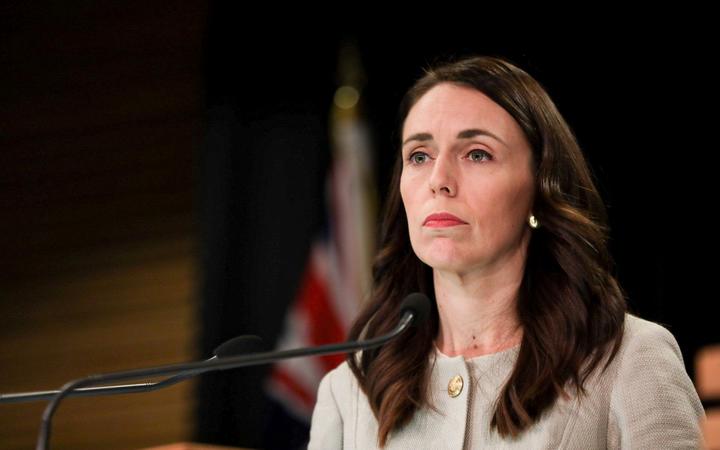On 21 April 2021 Minister of Health Andrew Little announced a major restructuring of Aotearoa New Zealand’s health system involving three main changes to take effect on 1 July 2022. Better understanding the third of these changes is helped by drawing upon Baldrick of the Blackadder television comedy.
The first two changes are commendable; the establishment of the Maori Health Authority (MHA) and the new crown public health agency (located within the Ministry of Health). They both have the potential to sharpen the effectiveness of addressing the impact of external social determinants of health, wellbeing, and access to quality patient care treatment.
Establishing these two new entities does not of themselves disrupt or destabilise the health system. Both new entities could established without any other restructuring, aside from transferring some functions to them presently performed by the health ministry.
Removing the ‘point of connection’
But the third change does disrupt and destabilise the health system; the abolition of district health boards (DHBs). DHBs are the ‘point of connection’ between central government and healthcare provision and treatment both in communities and public hospitals.
It stands to reason that if this ‘point of connection’ is removed a new one should be developed to replace it. Further, it also stands to reason that there would be a transition plan from the current ‘point of connection’ (DHBs) to the new one (Health New Zealand – HNZ) to ensure a transparently smooth transition on 1 July. It was for this reason that the Government created a transition unit within the Prime Minister’s department.
This third change suffered from a severe democratic deficit. Abolishing DHBs was not recommended by the earlier review of the health and disability system led by Heather Simpson. It was not part of Labour’s election manifesto in 2020. There was no public discussion on the matter before it was announced just over a year ago.
The abolition decision was made in complete secrecy. DHB chief executives themselves only were informed on the day of Andrew Little’s public announcement. The effect was to exclude the considerable expertise within the health system from being engaged over whether abolishing DHBs was sound and what the unintended consequences might be.

Andrew Little’s announcement was made undemocratically relying primarily on the advice of business consultants; health system expertise was excluded
Instead the Government looked to outside the health system, specifically business consultants and more specifically, Ernst & Young (EY). The risks of this reliance on business consultants is discussed in my article published by BusinessDesk (26 April): how not to build an aeroplane (or a health system).
Little’s rationale
The only rationale from Minister Little was his misleading claim that New Zealand had 20 different health systems. This is nonsense to those that have expertise in health systems (but not to business consultants).
Most health services are provided locally because it is common sense to do so; several are delivered regionally because it is common sense to do so; and a small number are provided nationally because it is common sense to do so. It is called subsidiarity. This is not rocket science. It is the ‘point of connection’ that is important.
The consequence of Little’s false accusation was to lead to a further one. He blamed DHBs for what is called ‘postcode lottery’ access to health services. In fact, the unique nature of DHBs as integrated organisations covering community and hospital healthcare for defined populations made ‘postcode lottery’ more transparent.
I discuss this further in my BusinessDesk article (16 March): Ditching DHBs because of what they reveal about postcode lottery.
How Labour became ‘easy meat’ for business consultants
So how did this happen? How did the Labour Party do a u-turn from supporting DHBs when in opposition to abolishing them when in government and without a mandate arising out of public consultation. Labour took office (in 2017 in coalition and 2020 with an absolute majority).

Prime Minister Ardern leads a government that has a structural and elitist approach making it distrustful of the expertise and experience within the health system, and instead dependent on business consultants
There were three factors that help provide the explanation. First, Labour believed that changing structures rather than leadership and workplace culture was the most effective way of achieving system improvement. Both history and the experience of many in the health system know this to be badly mistaken. But these were the people Labour chose to discount.
Second, Jacinda Ardern’s government is social liberal and technocratic (not left-wing as claimed by the political right). While social liberalism is laudable (as far as it goes) it can lead to elitism and has done so in Aotearoa.
Third, Labour had little or no confidence in the leadership of the health system. Initially it was thought that this applied to the health ministry but it became clear that this lack of confidence extended to DHBs. Consequently Ardern turned elsewhere.

Baldrick: “Jacinda, I’ve got a cunning plan”
The combination of these three factors meant that the Government became ‘easy meat’ for external business consultants with a ‘cunning plan’. Apart from shorter-term technical projects, this was despite the experience of business consultants engaged by DHBs ranging largely from mediocre at best to counter-productive at worst (but very expensive regardless).
A transition from DHBs without a transition plan
The consequence was that the Transition Unit (sitting in the Prime Minister’s department) responsible for developing a transition plan was business consultant dominated. This included appointing EY senior partner Stephen McKernan as the unit’s director (the Prime Minister made a direct approach to him to take up this role).

EY senior partner Stephen McKernan appointed Transition Unit Director
But there is a huge problem. With only 40workingdays to go those running DHBs have no more information on what will replace them on 1 July than they had on 21 April last year when the health minister announced their abolition back.
In other words, the organisation responsible for planning the transition from one ‘point of connection’ to another (ie, from DHBs to HNZ) has no plan. With 40 working days to go there is no understanding how this will happen. For example:
- DHBs are presently responsible for funding primary care in their geographically defined population. They disappear on 1 July. What happens next is unclear. Further, the mechanism for determining primary care funding is to be replaced sometime in the future but when and with what is unknown.
- Both HNZ and MHA have chief executives already employed. But few, if any, of the top leadership tiers will be on board by 1 July (it has been agreed, however, that a number of health ministry staff will transfer to the new entities on 1 July).
- Localities are supposed to be critical to the new system. There are to be 80 localities but only nine have been announced to date and these appear to be ‘prototypes’ at best (scaffoldings with little or nothing within them). Implementation of localities has been extended out to 2024.
Just when you thought it couldn’t get worse
But it gets worse. In his April 2021 announcement Andrew Little advised that HNZ would have four regional offices. Although not confirmed it had been assumed that these would be in Auckland, Hamilton, Wellington and Christchurch consistent with the current four regional groupings of DHBs.
But in the last three weeks there has been a strong kick-back by MHA and supported by HNZ (and observed by bemused DHB chief executives). MHA wants to increase the number of HNZ regional offices and appears to have latched onto around eight (in 2020 the Simpson review recommended that the number of DHBs be reduced from 20 to between 8 and 12).
The logic behind MHA’s initiative appears to be recognition that four regional offices will make it very difficult to connect with New Zealand’s diverse and geographically dispersed communities that are supposed to the basis of the new localities.
With HNZ’s support, MHA has a legitimate concern revealing a large failing in the restructuring. But it does not fit in with the level of centralisation sought by Transition Unit Director and EY’s McKernan who is strongly resisting the initiative. Tensions are high.
Hence, with a mere 40 working days to go, we have a behind-the-scenes scrap over how many HNZ regional offices there should be (and where they might be located). Either MHA/HNZ or McKernan will have to backdown, or the health minister will have to make a call.
Broken ‘golden rules’
At least Baldrick’s ‘cunning plans’ actually existing, as inept as they were. It is an extraordinary achievement to have outflanked Baldrick in ineptitude.

Blackadder (Little?) to Baldrick (McKernan?): where’s the f###ing cunning transition plan
There have been several ‘golden rules’ broken in this debacle that go to the heart of political leadership competence (no doubt there are more):
- Before you allow business consultants to design a health system, first have a dummy run with panel beaters designing a traffic intersection.
- Focussing on structural change to achieve sustainable beneficial gains is likely to fail.
- Have more confidence in the experience and wisdom that exists within the health system. It knows not only what works but also what does not work.
- Don’t devalue and disrespect the workforce that is expected to keep the health system going post-restructure.
- Don’t replace what you have until you know what you will replace it with and are confident that it will do a better job.
- Never, never restructure a health system during a pandemic.
Just saying!
Ian Powell was Executive Director of the Association of Salaried Medical Specialists, the professional union representing senior doctors and dentists in New Zealand, for over 30 years, until December 2019. He is now a health systems, labour market, and political commentator living in the small river estuary community of Otaihanga (the place by the tide). First published at Otaihanga Second Opinion






Typical of fools with no practical experience in the real world.
Labour are obsessed with restructuring into larger and larger bureaucracies because that’s all they understand and are capable of understanding. Just look at the polytechnic restructuring – achieved exactly nothing, except centralisation.
Really its about control and reshaping a system in their own image.
It reminds me of a classic (if obscure) 1956 memoir of a test pilot named Bill Waterton, called The Quick and the Dead. Waterton observed that if test pilots were honest in their reports they would start to become regarded as bearers of bad news by British management, which did not want to hear that the latest plane they were trying to palm off onto the airlines (e.g. the Comet 1) or the RAF still needed a thousand adjustments, or maybe even that it was a turkey that should be melted down and made into something else. Waterton suggested between the lines of his epilogue ‘Why Britain has Failed’ that if this stuffed-shirt attitude was more generally widespread, Britain as a whole was stuffed. Rather prophetic for 1956 and by extension for Britain’s most loyal colony, which copies most of that country’s vices.
DHB’s are top heavy with admin costs ,from what I can understand.
Plenty of $$$$$$$ misallocated.
There is no evidence to support this claim. In fact, lack of admin staff especially over the past decade has been that the work of heath professionals providing patient care has been made harder by them having to pick up extra admin tasks.
DHBs have not delivered for Maori or PI and many new immigrants. Its a postcode lottery and during the Covid pandemic the poor performing DHBs were shown up. Maori and PI community groups stepped up to the plate and did the DHBs job so much for them knowing their communities. As knowing them is one thing but having their trust and respect is another.
who sits on the DHBs is more important than another cosmetic reorganisation.
DHBs have identified rather than caused the postcode lottery and are how being scapegoated for it. Underfunding leading to serious workforce shortages has been the biggest contributor.
DHBs were constrained in what they could do in the vaccine rollout by the health ministry. It was only when DHBs pushed back behind-the-scenes and were given more freedom to work with community groups including Maori and PI
that the rollout got real traction. DHBs were the key point of connection between government and communities over the rollout leading to NZ having one of the highest full vaccination rates in the world including the European Union.
Of all this government’s dumb ideas, offing the DHBs was the dumbest by a country mile.
And this just adds to the perception of dumbassery:
“Hence, with a mere 40 working days to go, we have a behind-the-scenes scrap over how many HNZ regional offices there should be (and where they might be located). Either MHA/HNZ or McKernan will have to backdown, or the health minister will have to make a call.”
DHBs aren’t perfect, but had the potential to deliver excellent healthcare, were it the case that they’d ever been properly funded.
So here we are in NZ: set fair to return to something like the UK’s NHS. Which doesn’t work, to the extent that the UK had been looking at our DHB model. You couldn’t make this stuff up: it surely does belong in an episode of “Blackadder”.
Their dumbest idea? That’s a big call D’Esterre. I mean there’s some stiff competition.
Pope Punctilious II: “I mean there’s some stiff competition.”
True…we’re spoiled for choice, aren’t we! But healthcare is one of those fundamentals: if the government cocks that up, we’re done for.
Is this simply a way for Labour to rearrange the deck chairs on the Titanic to try and hide four foreign owned banks from having their multi billion dollar way with us?
When things become confusing and stop making sense altogether you know that some fucker’s making a pile of money out of that obfuscation.
While on that note? Which ministry has oversight over the four foreign owned banks? Perhaps they would care to explain and advise?
The reason I ask is because I literally don’t understand, can comprehend or rationalise how our government can allow four foreign owned banks to take multiples of billions of dollars out of our country, a country with a population similar to that of Melbourne AU in the broad light of day.
While we must watch on in horror as our health system struggles financially with our needs for it we must look on helplessly as ASB,ANZ,BNZ and Westpac take billions of dollars in net profits out of our country by way of what I can only describe as legitimised extortion AKA criminal acts.
House prices fly off into outer space for absolutely no real and actual reason as consumables like food, fuel etc follow in hot pursuit. Why? Why is that? Why must our health systems, once the envy of the first world, be made to watch on as those crimes are committed?
I think we all need to know. I think we need to become very aware of who, how and by how much.
Is our government like the father of the family going out the back door and down the pub to piss up with his mates with the weeks wages but when the kids and the missus gets sick, there’s no money left in the kitty so dad starts lying.
Our government is lying to us and four foreign owned banks are swindling our money out from under our noses. There you go. It’s that simple.
So what are we going to do about that?
TAKE NOTE
Instead the Government looked to outside the health system, specifically business consultants and more specifically, Ernst & Young (EY). The risks of this reliance on business consultants is discussed in my article published by BusinessDesk (26 April): how not to build an aeroplane (or a health system)
In olden days you veiased a group of hefty men to take over a country or some useful machinery. They carried swords and other axes and other fearsome weapons – in this modern age the cleaving is done by consultants such as one of these smart-alec financial/economic managers like EY, S&P,
Are we bound to trudge along making puerile decisions, voting in puerile actors, and spending our substance in failed pursuits, and worst of all wasting the value of the effort of our forebears who went forward and built with less advantages than us. They deserve better from their weakening progeny.
Are we like this? “The sons of York will destroy each other, one brother destroying another, uncles devouring nephews, fathers beheading sons. They are a house which has to have blood, and they will shed their own if they have no other enemy.”
― Philippa Gregory, The White Queen
and
* “A man will always promise to do more than he can do to a woman he cannot understand.” …
* “Edward lives as if there is no tomorrow, Richard as if he wants no tomorrow, and George as though someone should give it to him for free.” …
* “But I don’t forget and I don’t forgive.”
The White Queen Quotes by Philippa Gregory – Goodreads
Or Lewis Carroll’s White Queen and Alice. Is this us?″
‘You couldn’t have it if you did want it,’ the Queen said. ‘The rule is, jam to-morrow and jam yesterday – but never jam to-day.’
‘It must come sometimes to ‘jam to-day,″ Alice objected.
‘No, it can’t,’ said the Queen. ‘It’s jam every other day: to-day isn’t any other day, you know.‘”
Is this what we smarm along with for ever, nil desperandum.
but it will provide layers of admin staff jobs for the linos to distribute amongst friends
Ideology – it’s fucking destructive! Folks, next year vote for decent policies!!!! Yes, I said it, if National’s policies are not decent by then, don’t vote for them. Just don’t vote for empty promises and half baked ideas and destructive policies.
What happens to pay negotiations that are underway if not settled by 1 July
They continue with Health NZ.
WHERE IS THE PHARMAC final report ?
Apparently the only ones allowed to see it are crown stakeholders !!!
The 112,000 Pharmac review Petition signers along with the other 100,000 petition signers on 10 other petitions in 2019/2020 and review submitter’s have not been allowed to see it and Andrew little is refusing to release it publicly.
Andrew little and crown stakeholders have had it for 3 months so why hasn’t it been released.
Lets remember Labour did not want a Pharmac review and they blatantly refused to have the funding model as part of the review.
Obviously Labour and Andrew Little don’t like what it says.
They sure as hell did not like the preliminary report.